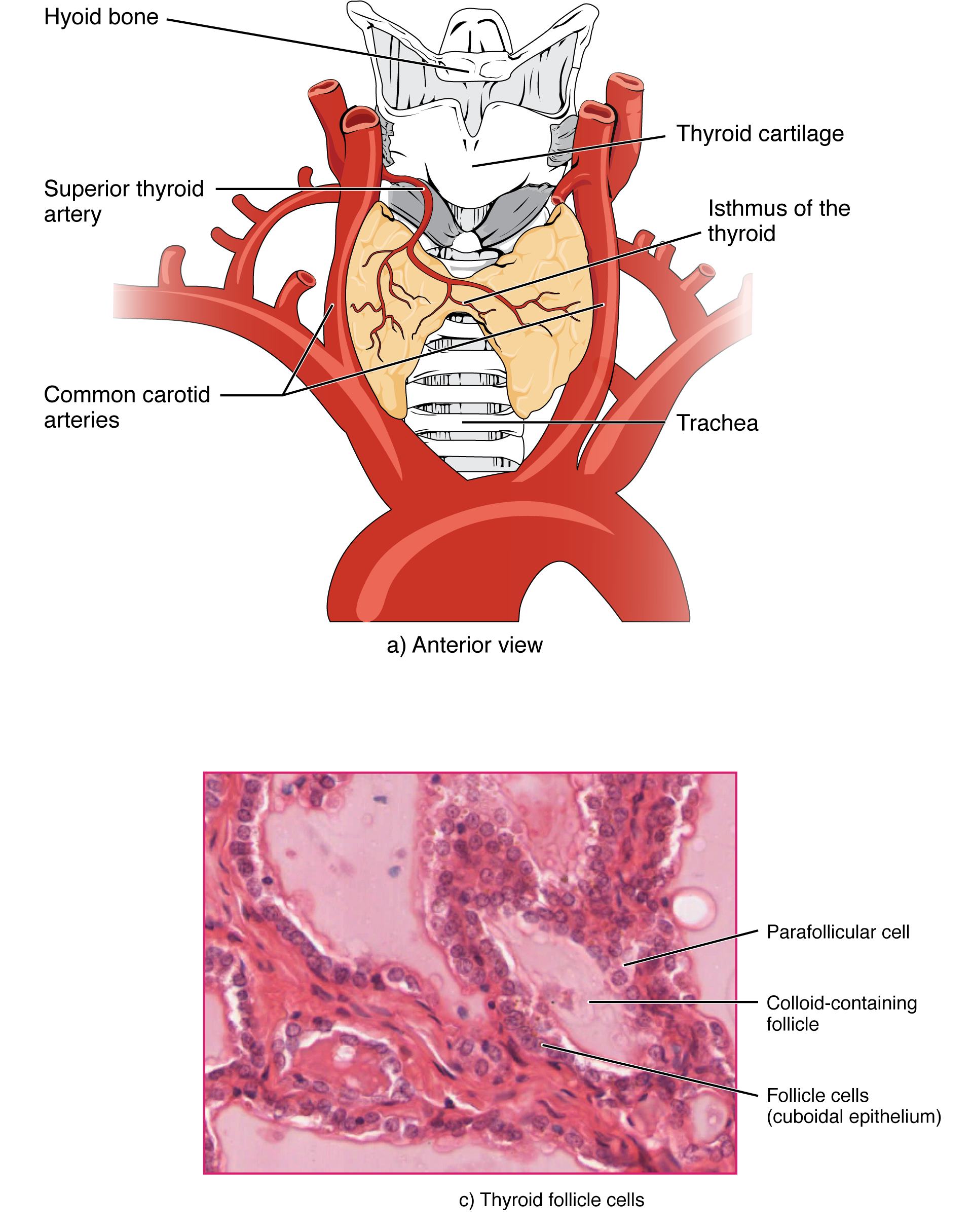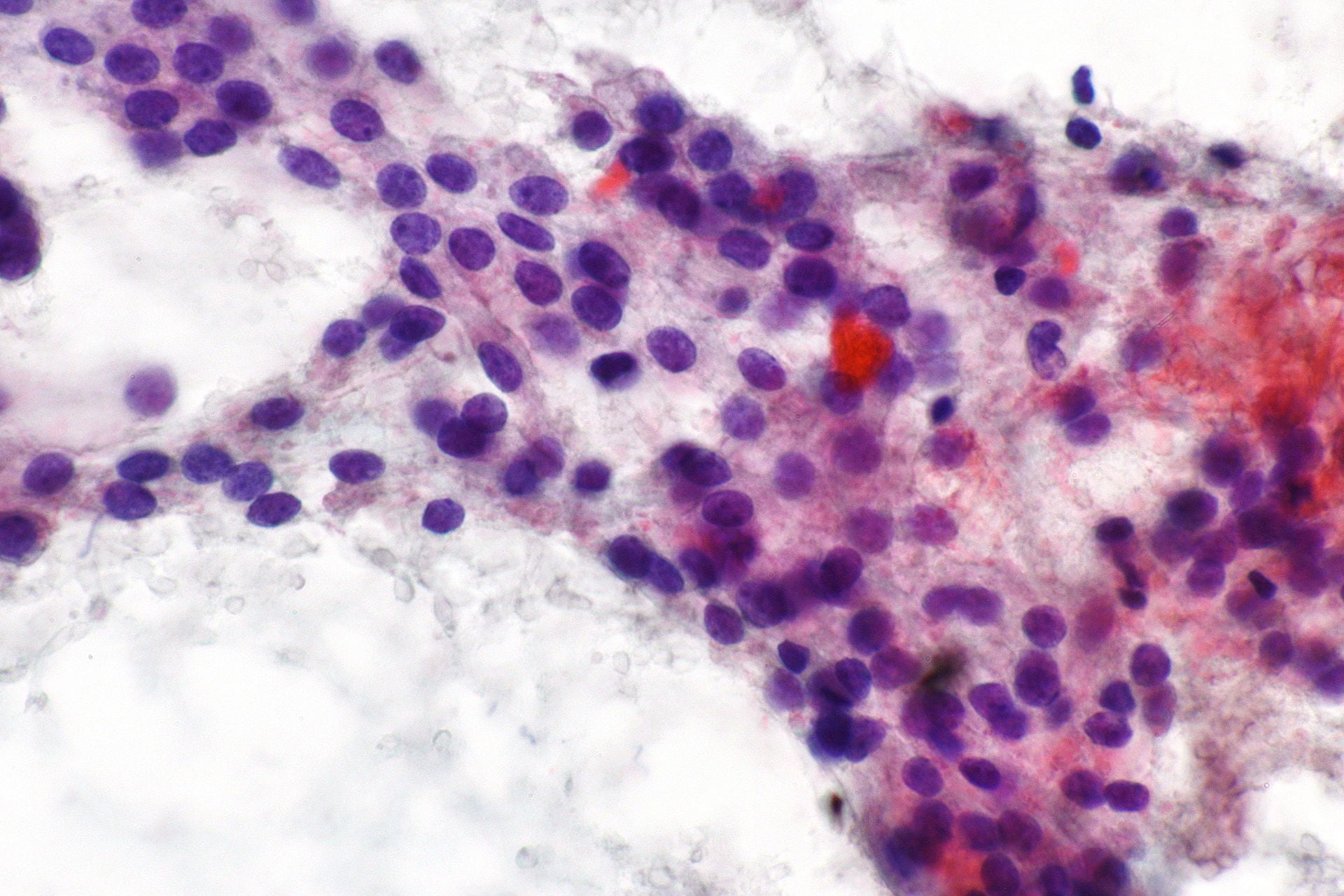The endocrine system is comprised of multiple glands that function to maintain homeostasis in the body. The hypothalamus, pituitary, thyroid, parathyroid, pancreas and adrenal glands are the major components of the endocrine system. In addition, adipose tissue has recently been recognized as an endocrine organ with vital contributions in health and disease.
It is a butterfly shaped gland located anteriorly to the trachea in the neck. It has two lobes connected by an isthmus. The lobes extend from C5-T1 vertebrae, from thyroid cartilage to the level of the fifth or sixth tracheal rings. The isthmus lies at the level of second to fourth tracheal rings. A small pyramidal lobe may be present sometimes, located near the isthmus. It is attached to the cricoid cartilage by the suspensory ligament of Berry. The pretracheal fascia covers the thyroid gland as well as the thyroid and cricoid cartilages and the hyoid bone, causing the thyroid gland to move up with swallowing or on protrusion of the tongue.

Histologically, the thyroid gland shows multiple follicles filled with colloid. The follicles are lined by follicular or principal cells and parafollicular cells. The follicular cells are columnar to low cuboidal and have TSH receptors. Active glands have smaller follicles, taller columnar looking cells with prominent Golgi and endoplasmic reticulum and less colloid. Colloid consists of glycoproteins like iodinated thyroglobulins that are made and secreted by the follicular cells. Interspersed in between the epithelial cells are the parafollicular or C cells. They appear pale with clear cytoplasm and are seen only in the middle third or lateral lobes of the thyroid. Parafollicular cells secrete calcitonin.

Blood supply is by the superior and inferior thyroid arteries and in some cases by the thyroidea ima artery. The superior thyroid artery is a branch of the external carotid artery. It runs with the external laryngeal nerve. It enters the gland at the superior pole of the lobe. To avoid accidental ligation of the accompanying nerve, the superior thyroid artery should be ligated as close to the superior pole as possible during thyroidectomy. The inferior thyroid artery arises from the thyrocervical trunk and enters the gland at the lower pole. It is in close relation to the recurrent laryngeal nerve at the lower pole, hence the inferior thyroid artery should be ligated as far away from the lower pole as possible during thyroidectomy to avoid injury to the recurrent laryngeal nerve. Both superior and inferior thyroid arteries anastomose with each other on the posterior margin of the gland. The thyroidea ima is a direct branch of the arch of aorta or sometimes, the brachiocephalic trunk. The thyroid gland is drained by three pairs of veins. Superior thyroid and middle thyroid veins drain into the IJV while the inferior thyroid veins drain into the brachiocephalic veins. The right and left inferior thyroid veins communicate in front of the trachea and may be injured during a tracheostomy. Lymphatic drainage from the upper part is to the jugulodigastric nodes in the deep cervical chain and from the lower part is to the jugulo-omohyoid nodes. Some drain directly into the thoracic duct while few drain to the brachiocephalic nodes in the mediastinum. Prelaryngeal and pre and paratracheal nodes are intermediary nodes in the lymphatic drainage of the thyroid gland.
They are located right behind the thyroid gland embedded in the fascial capsule of the thyroid. They produce the hormone PTH or parathyroid hormone. There are four parathyroid glands - two superior and two inferior. Histologically, it shows mainly two types of cells - chief cells or principle cells and oxyphil cells. The chief cells secrete PTH, are small and pale with eosinophilic cytoplasm. Normally, about 80% of the gland is comprised of chief cells. Oxyphil cells stain deep pink and are rich in mitochondria. They increase in number in chronic renal disease and uremia. The function of oxyphil cells is unknown but they have calcium sensing receptors and the potential to secrete PTHrP and calcitriol. The parathyroid glands are supplied by the parathyroid artery which arises from the inferior thyroid artery. Venous and lymphatic drainage follows the thyroid gland.
Sign up for free to take 4 quiz questions on this topic